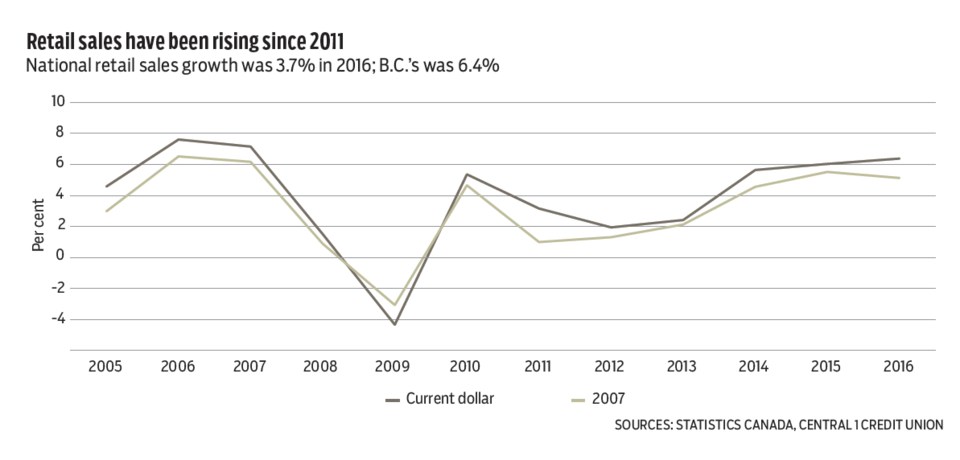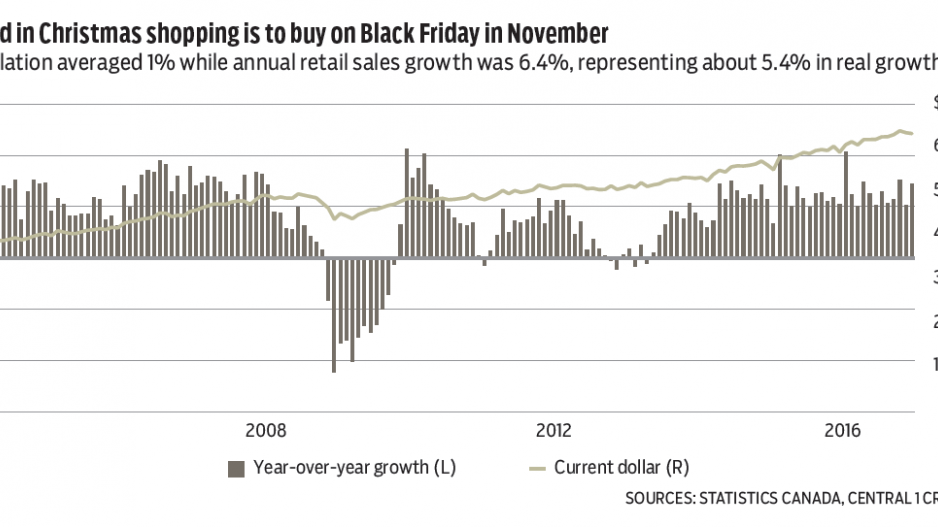B.C. retail conditions remained strong in December despite a second straight decline in monthly sales. Total dollar-volume sales fell to a seasonally adjusted $6.33 billion, a 0.3% drop from November.
While pointing to slowdown during the typically busier Christmas season, seasonal holiday shopping patterns have likely shifted to earlier months due to events like Black Friday and Cyber Monday. Month-to-month changes in December’s seasonally adjusted sales have been negative since 2013.
Nonetheless, year-over-year sales growth remained robust at 7.2% in December, pushing annual sales growth to 6.4% and marking a third straight annual gain of near 6%. Consumer demand has been lifted by hefty employment gains, active housing markets and strong tourism numbers. Nationally, retail sales growth was a modest 3.7%. With retail inflation averaging just over 1%, real gains in B.C. were closer to 5% with the Vancouver census metropolitan area leading the province.
Higher sales were observed across the retail spectrum but were led by motor vehicle activity. New car sales buttressed retail strength with growth of more than 7%, representing a fifth of the absolute gain. The housing sector also provided further lift to retailers, as furniture stores posted a 12.5% increase, while sellers of building materials and garden equipment gained 13.9%.

Domestic economic growth, population inflows and tourism underpin retail spending growth in 2017, but a slowdown in housing activity and lower employment growth will be an impediment. That said, growth is expected to moderate in 2017 to a still healthy 5% with real, inflation-adjusted sales in the 3.5% range.
A record number of international visitors came to B.C. in 2016 and helped drive some of the retail gains. More than 5.5 million international visitors spent at least one night in the province in 2016. That is 12.3% more than in 2015.
Total inflows to B.C. were virtually unchanged in December at a seasonally adjusted 482,160 persons as a rise in overseas visitors offset U.S.-origin declines.
A low Canadian dollar and a politically stable environment have contributed to upward momentum, both recreational and business-oriented. Overseas visits climbed through 2016, driving annual growth in tourism to 15%. There was a greater swing in the flow of U.S. visits, but growth was still substantial at 11%. •
Bryan Yu is senior economist at Central 1 Credit Union.




